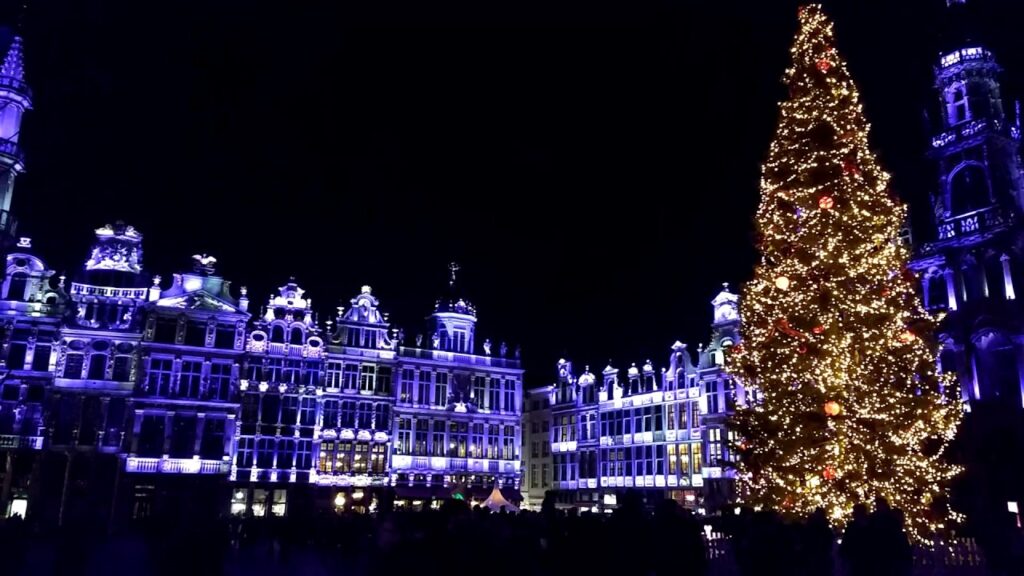Introduction As is tradition, when Christmas approaches our streets are filled with lights of all kinds and colours. However, while the main European objective is to achieve climate neutrality and avoid excessive energy consumption, spending large sums of money and energy to illuminate the city for Christmas is a serious mistake.
According to a study by the University of York, 5.5% of the carbon dioxide produced in a year is emitted on Christmas days. And the Association of Energy Consumers points out that Christmas increases electricity consumption in Spanish homes by 28%. In large cities, this consumption is on the rise: the specialized consultancy Smartlighting estimates an increase in festive lighting of more than 40% compared to the previous year in cities such as Madrid.
In addition, NASA researchers studied how nighttime light intensity patterns change during the major holiday seasons: Christmas and New Year’s Day. They even claimed that astronauts are able to identify when it’s Christmas just by seeing the lights from space.

The problems that artificial light causes in biodiversity are scientific evidence, since its presence in ecosystems where darkness is necessary affects many living beings. The lighting of Vigo or Madrid can damage areas such as the Atlantic Islands National Park. However, the most negative effect is the one suffered by insects: a recent study affirms that light pollution is one of the main causes of the progressive disappearance of pollinators such as bees. In regions with artificial lighting, pollinator visits are reduced by up to 62% compared to a dark place. However, humans are also not spared from the damaging effects of light pollution. Excess light prevents the production of melatonin and lead to chronodisruption, which is related to problems with insomnia, obesity, depression or diabetes.
To conclude, light pollution affects both living beings and the environment. We need to solve this problem as soon as possible, but without losing the essence of Christmas.
Survey and results
Based on a survey to 120 people about light pollution caused by Christmas lights, we have obtained the following results: About 75% of the surveyed people put Christmas lights on their houses, of which more than 50% do it indoors, and the rest put them on both indoors and outdoors. The vast majority of respondents leave the lights on from the end of December to the beginning of January during the Christmas holidays, from dusk until they go to bed, while a minority of 15% leave them all night. More than 60% of the respondents use lights connected to electricity, 30% battery-operated, and the remaining percentage rechargeable with sunlight, among others. About 90% of the people surveyed consider it necessary for the population to be informed of these facts, and would be willing to do without lights for the sake of the environment.
Possible solutions
Light pollution is a major problem for both living beings and the environment. Based on the results obtained in the survey, 90% of the subjects are willing to change. We have come up with several suggestions to reduce excessive light expenditure, something we believe is necessary.
First solution
The use of LED lights suppose an important energy saving. Although they are more expensive, they consume 75% less energy than energy-saving bulbs and last 25 times longer (approximately 70,000 hours). Apart from avoiding unnecessary energy costs in the form of heat, LED lights also reduce maintenance costs. Martin Barrow, Carbontrust’s efficiency expert, announced that «switching from conventional lights to LED is the big dramatic change» as «it means up to 75% savings compared to conventional lights».
Second solution
On the Grand Place in Brussels, the lights in the square have been turned off to admire the buildings illuminated by Christmas lights. For every lumen of Christmas light installed, one lumen of street light has been lowered. This measure reduces lighting levels and helps to save more energy. We believe that carrying on this idea in our cities could be another possible solution.

Third solution
Another solution for saving lighting costs is to adjust lighting schedules to avoid excessive economic and energy losses. Christmas lighting is usually set up in the streets between the end of November and the beginning of December. They are switched on at dusk, around half past six or seven in the evening, and they are not switched off until dawn comes again. In order to regulate this problem, the lights could be turned off at midnight to avoid wasting energy that is no longer appreciated after that hour. The only exception would be on Christmas Eve, Christmas Day and New Year’s Day, when they would be left on during the night.
References
https://blog.orange.es/innovacion/contaminacion-de-luces-de-navidad/
https://www.iluminet.com/iluminar-navidad-sin-contaminacion-luminica/
https://fluyecanarias.com/contaminacion-luminica-navidad/
Autores: Claudia Dominguez, Yaiza González, Daniel García, Layre Millán y Daniela Ruiz


